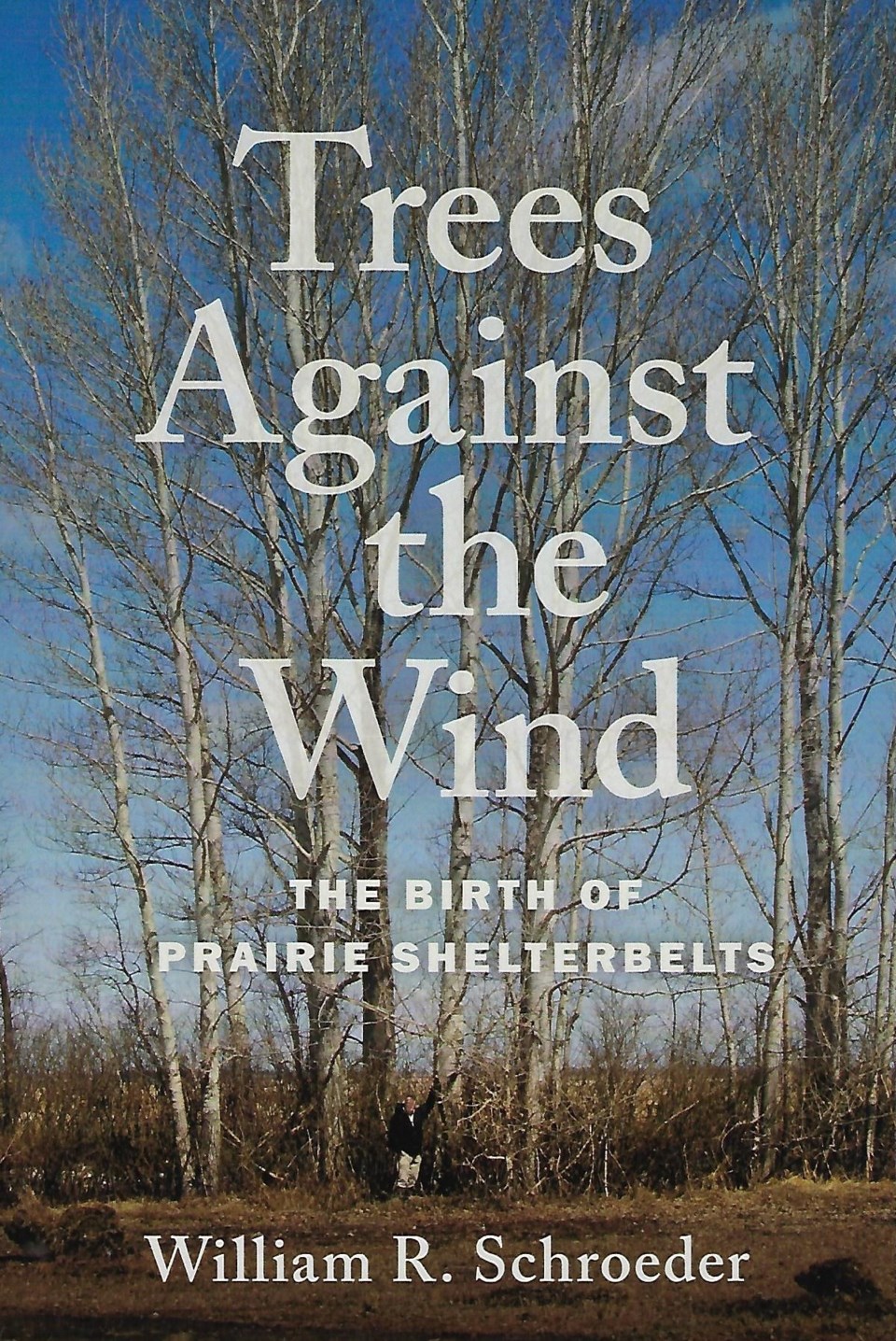“Trees Against the Wind: The Birth of Prairie Shelterbelts”
by William R. Schroeder
Published by Nature Saskatchewan
$29.95 ISBN 9780921104377
My grandmother was born in 1921 in a dry, treeless Saskatchewan railway town remembered despairingly, after her Scottish family relocated to Vancouver, as “a hell hole” (apologies, Tugaske).
Sixty years and two generations later, my parents’ work brought them back to Saskatchewan to raise my sisters and I in Saskatoon where our favourite route home wound under Spadina’s leafy arbor, our “Tunnel of Trees.”
I knew these urban elms had been planted. The shelterbelts framing point perspective along the highway signaled human engineering to me, too. But, before reading William Schroeder’s Trees Against the Wind, I vastly underestimated the scale and intentionality of the tree-planting initiatives that transformed the prairies between my grandmother’s childhood and my own.
Operating 1901-2013, Canada’s “Prairie Shelterbelt Program” (PSP) distributed 600 million trees to farms in the “New West” to increase agricultural resilience by buffering wind, stabilizing soil, and managing moisture. A Scottish forester, Norman Mackenzie Ross, directed the program’s start from an Experimental Farm at Indian Head. Ross’s selection and cultivation of cold- and drought-tolerant tree species is detailed engagingly by Schroeder, a tree geneticist himself, whose affection for now familiar PSP cultivars like caragana, poplar, spruce, and ash shines throughout this agrohistory.
Immense federal resources provided to the PSP addressed a dual agricultural and social mandate — trees were needed to convince newcomers, like my great-grandparents, that “empty” prairie spaces were a safe place to root and stay. In Ross’ vision, meeting settler’s aesthetic needs was key, and the “cult of the tree” promised social stability. A “Tree Planting Car” sponsored by CP Railway launched in 1920 to spread “the gospel of tree planting” with lantern slides and, later, talking films. A “Trees for Schools” initiative boosted youth interest. Shelterbelt Contests offered cash prizes to farmers beautifying their homesteads.
Planting the prairies was a decidedly colonial enterprise: all PSP staff had British ancestry under Ross’s leadership; all were male until 1920, after which British women held clerkships while women from Indian Head’s “Germantown” were offered low paying day labour; and, despite policies of the day encouraging reserve and scrip farm development, Schroeder shares no history of PSP engagement with Indigenous communities. Unpacking the PSP’s social impact requires a critical lens.
By the program’s closure in 2013, many PSPs trees had outlived the settler farms and yards they were planted to shelter. In Tugaske today, the school my grandmother attended is gone. A plaque and school bell remain, shaded by a stand of Russian poplar at the edge of a school yard bordered by lush caragana. The wind scoured town my great-grandparents fled is an arbored oasis surrounded by productive fields irrigated from the nearby Diefenbaker reservoir which my six-year-old mistook, on first sight, for the ocean. We live in a changed, and changing, province.
Responding to our current context of accelerating climate instability and biodiversity loss,
Canada launched “2 Billion Trees” (2BT) in 2021.i Trees Against the Wind offers timely insight to the 2BT; as our first national tree-planting initiative, the PSP drew on scientific innovation, practical creativity, and dogged perseverance—and it was immensely successful. This book is a rich, reflective, and ultimately motivating read which I strongly recommend, especially to families who call Saskatchewan home.
This book is available at your local bookstore or from www.skbooks.com




